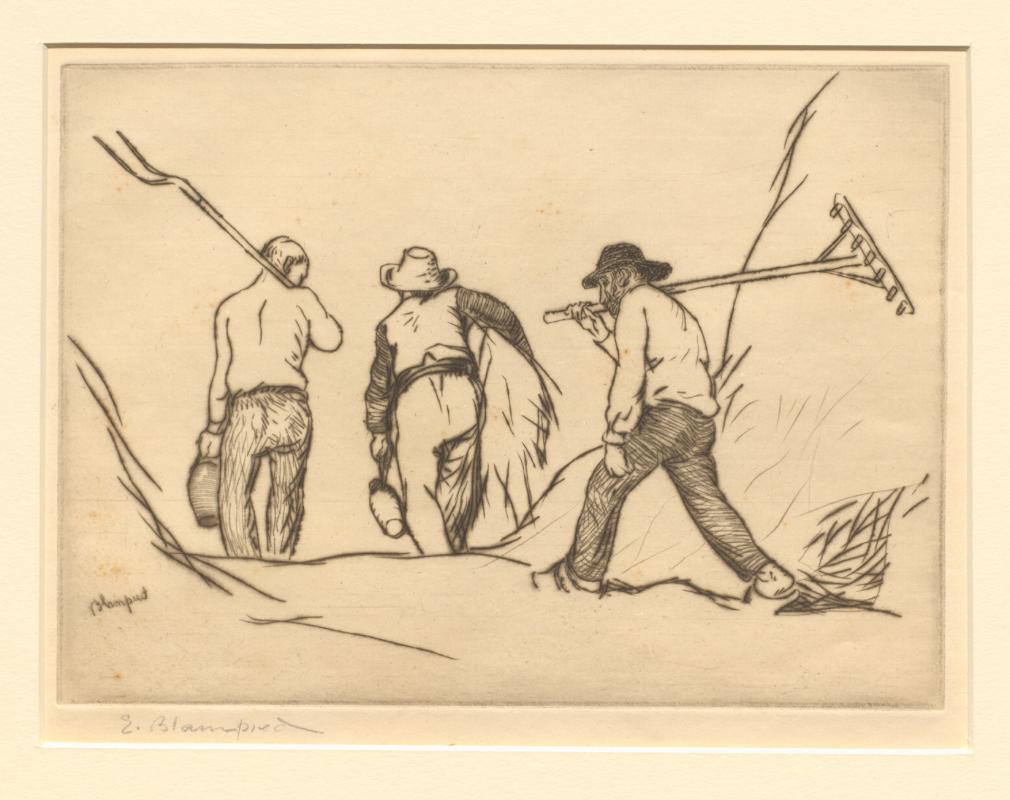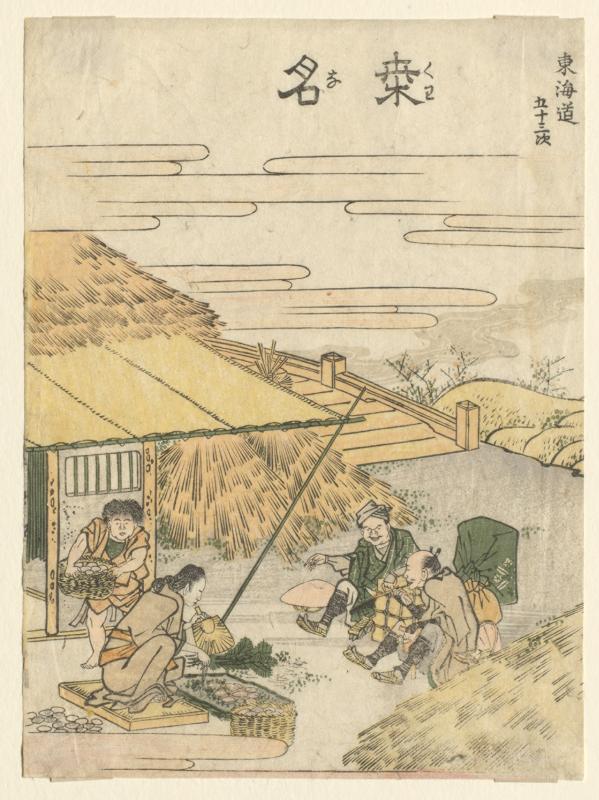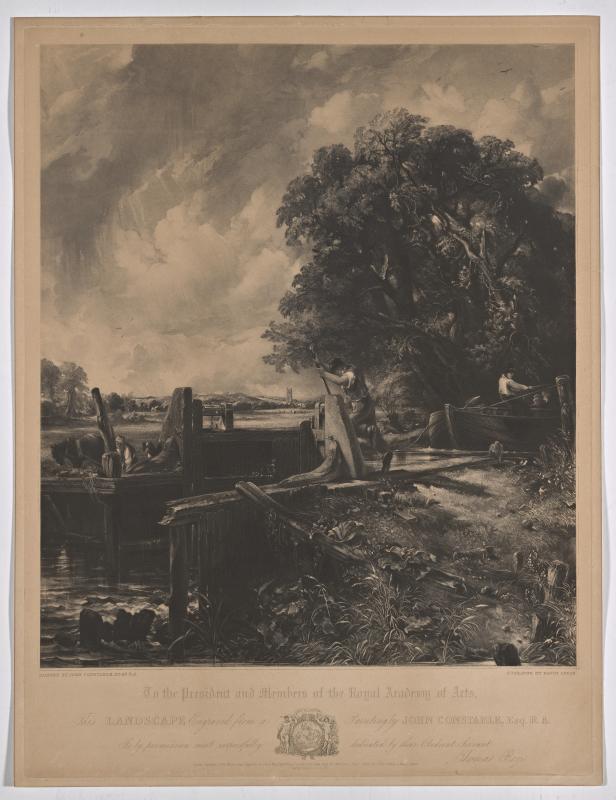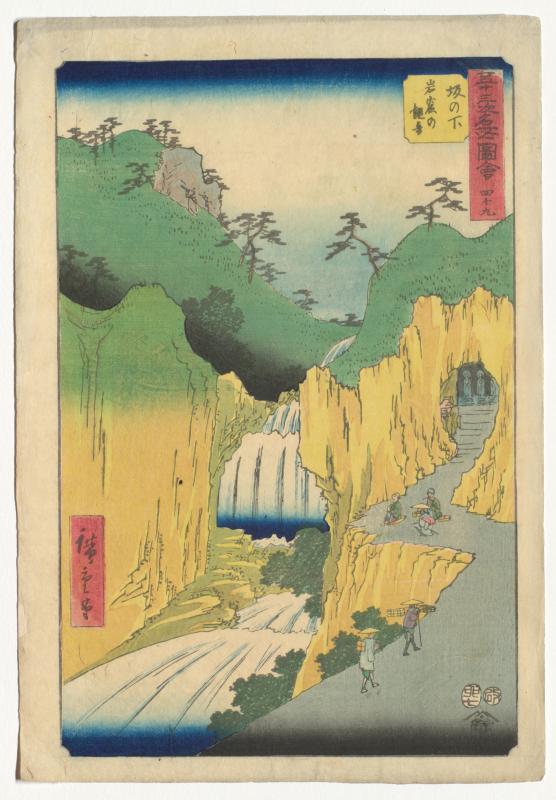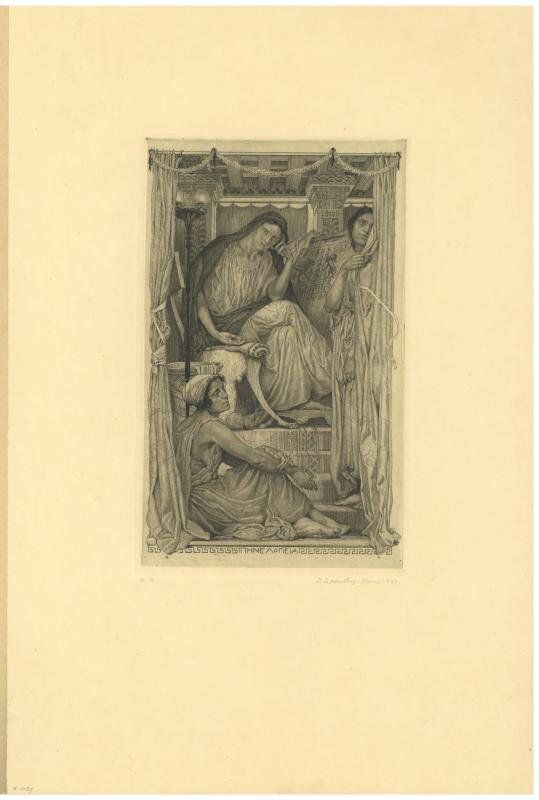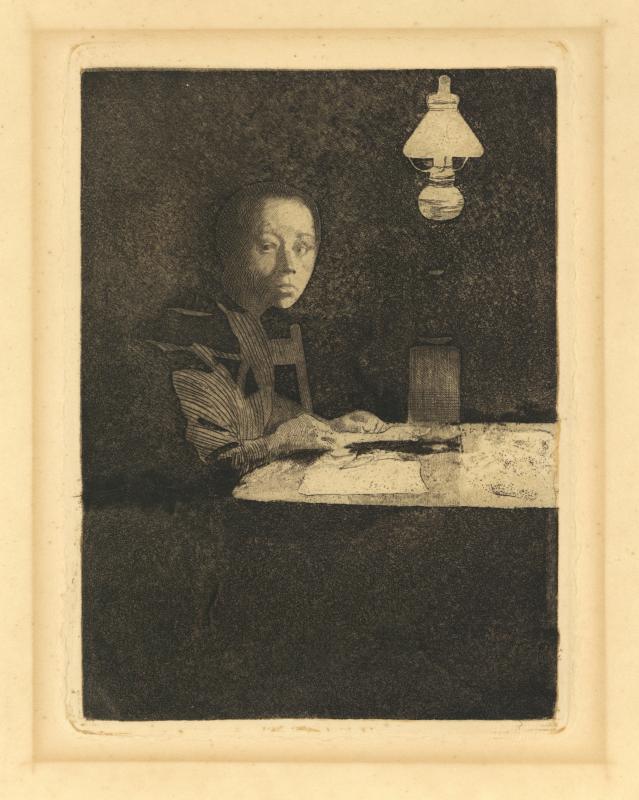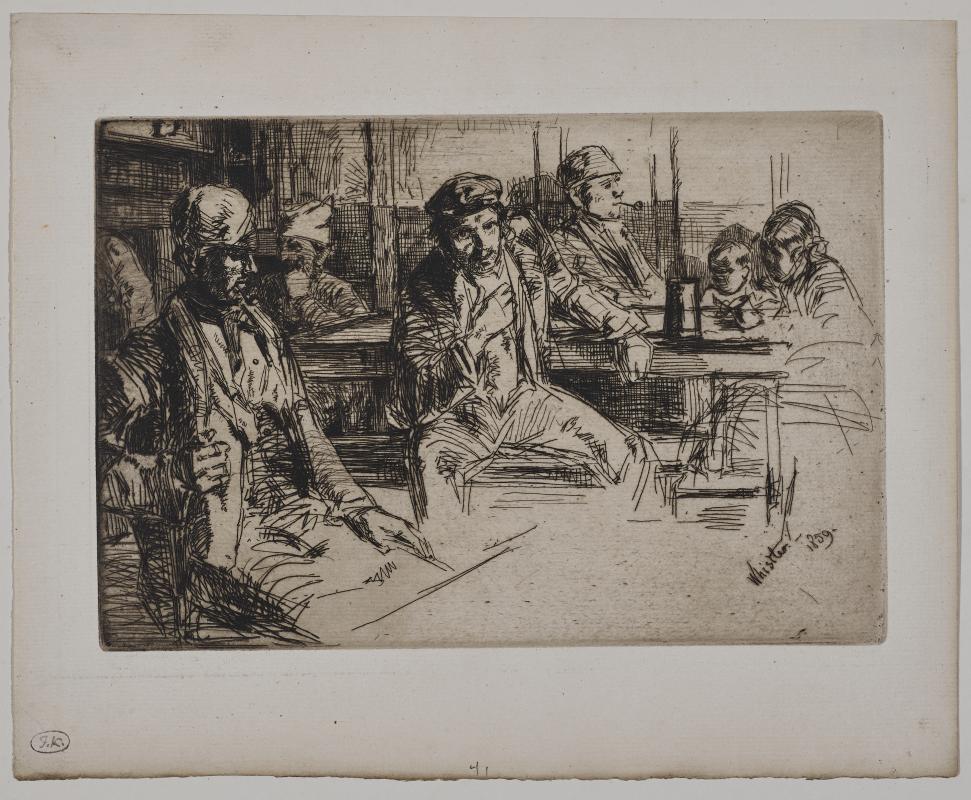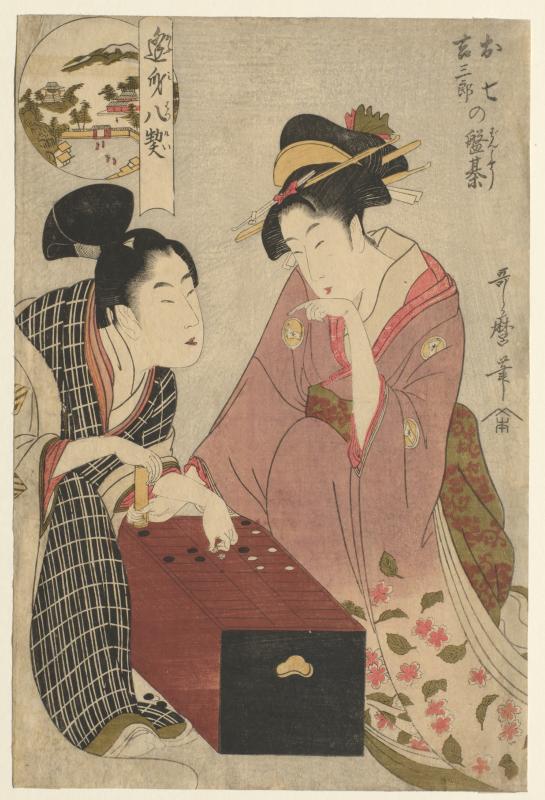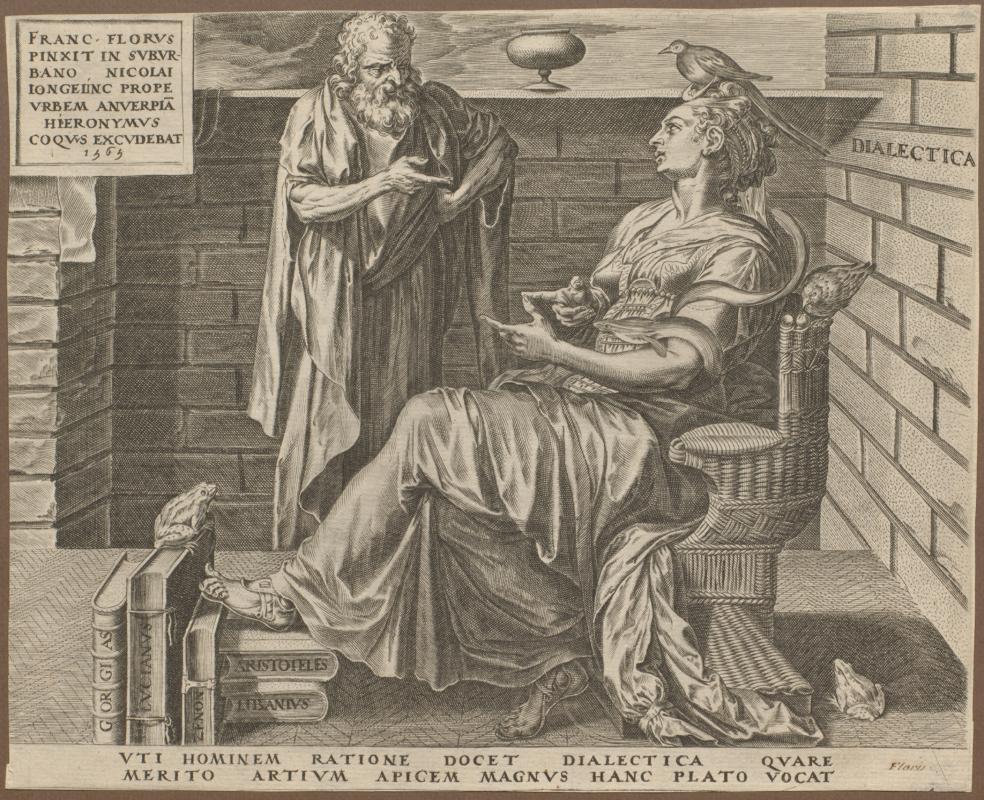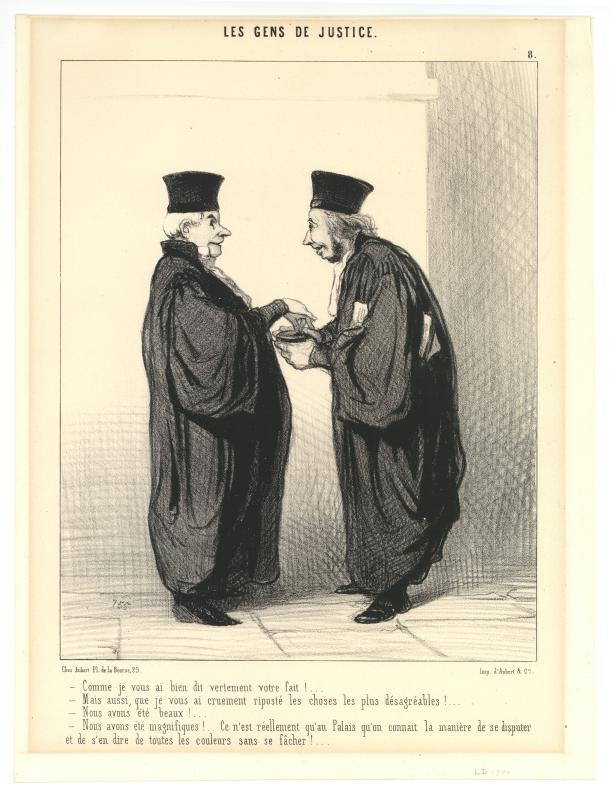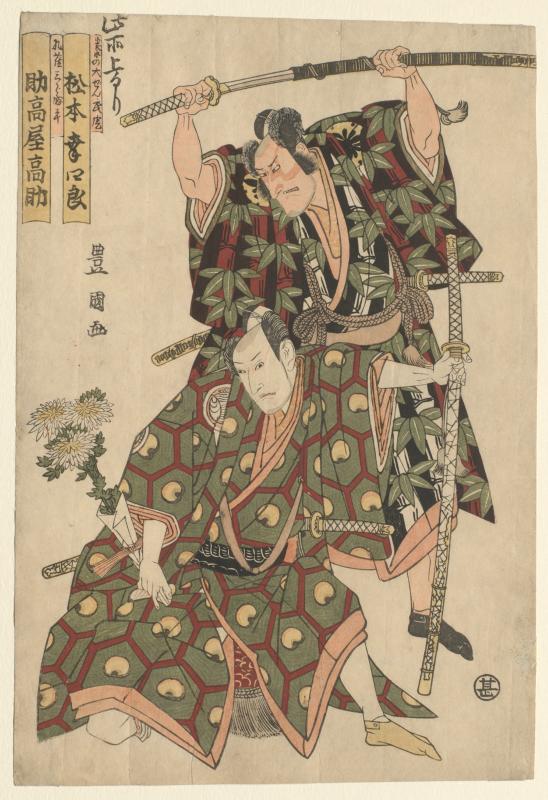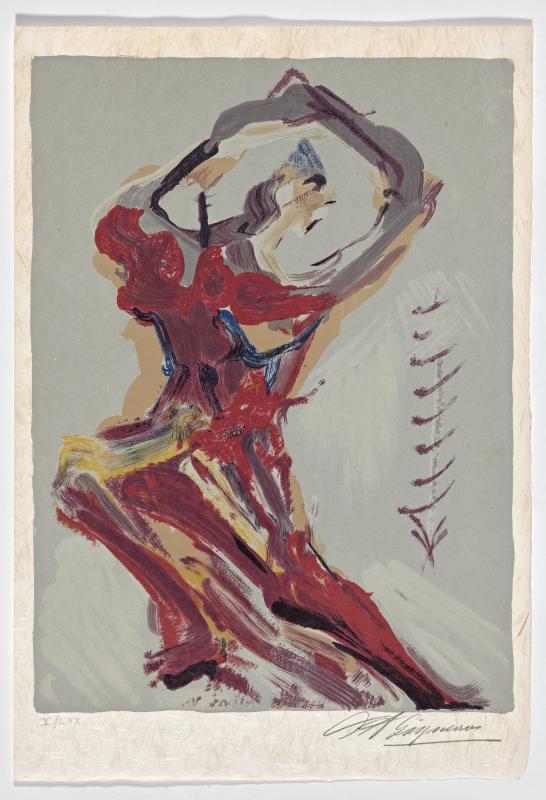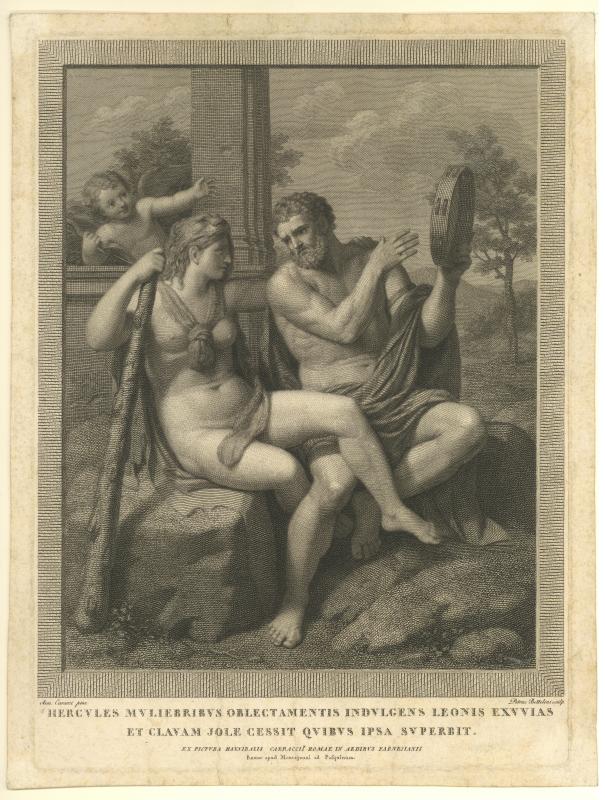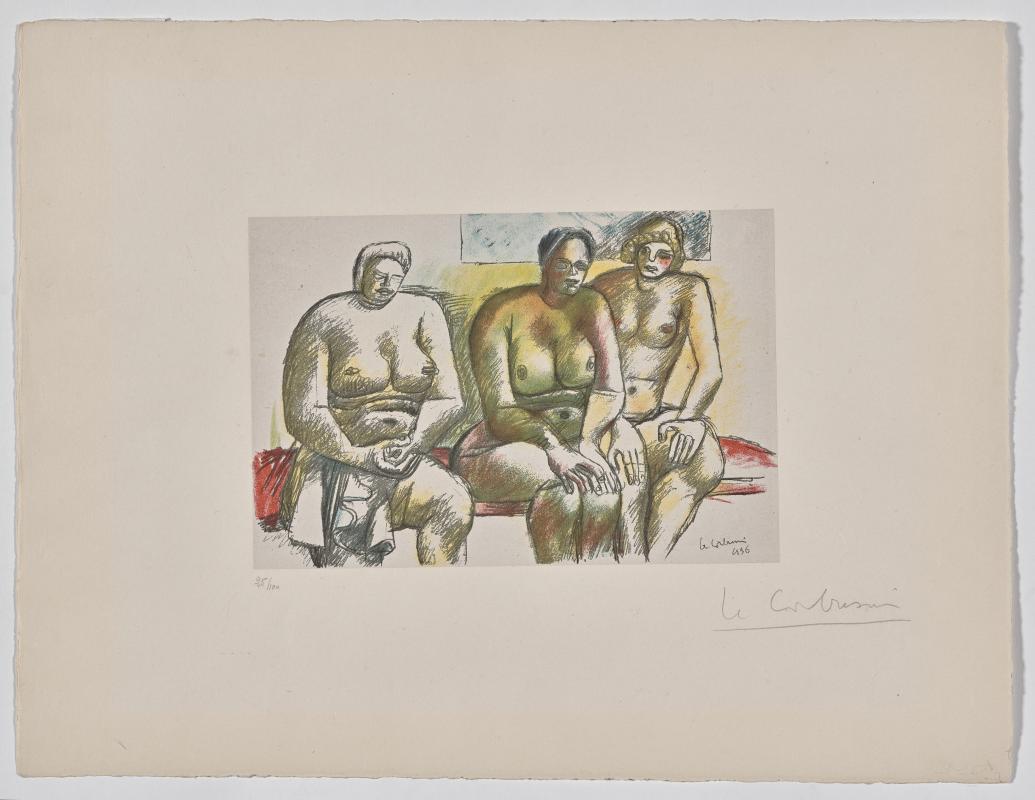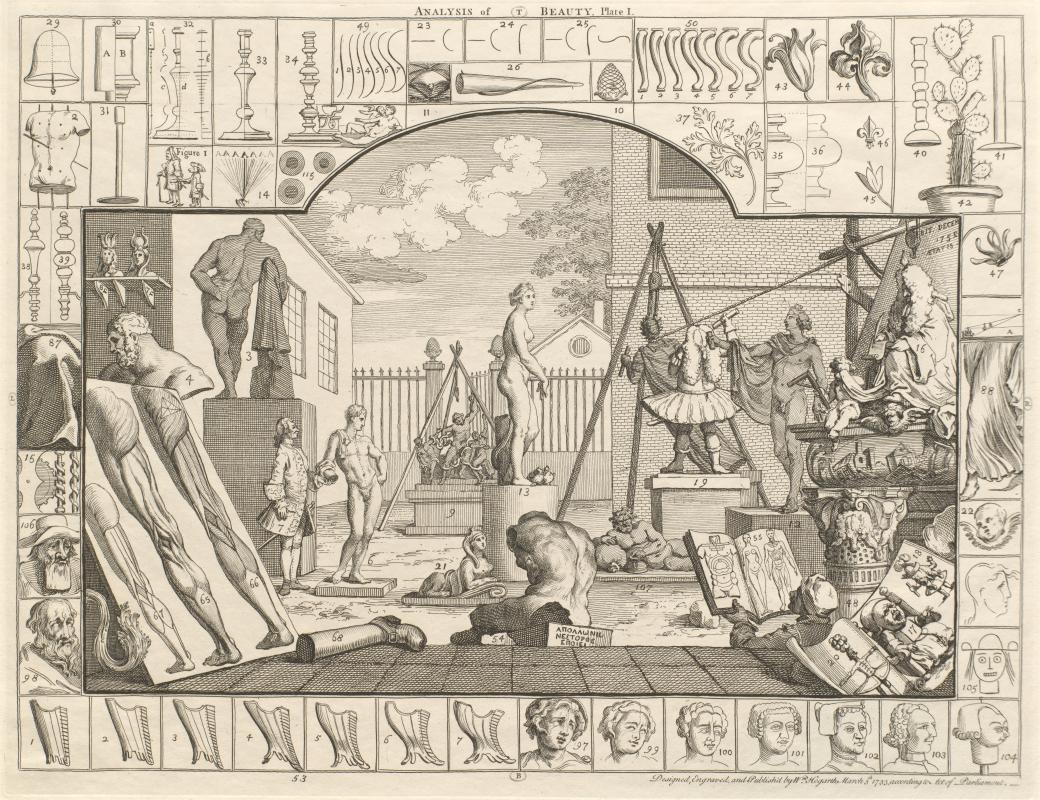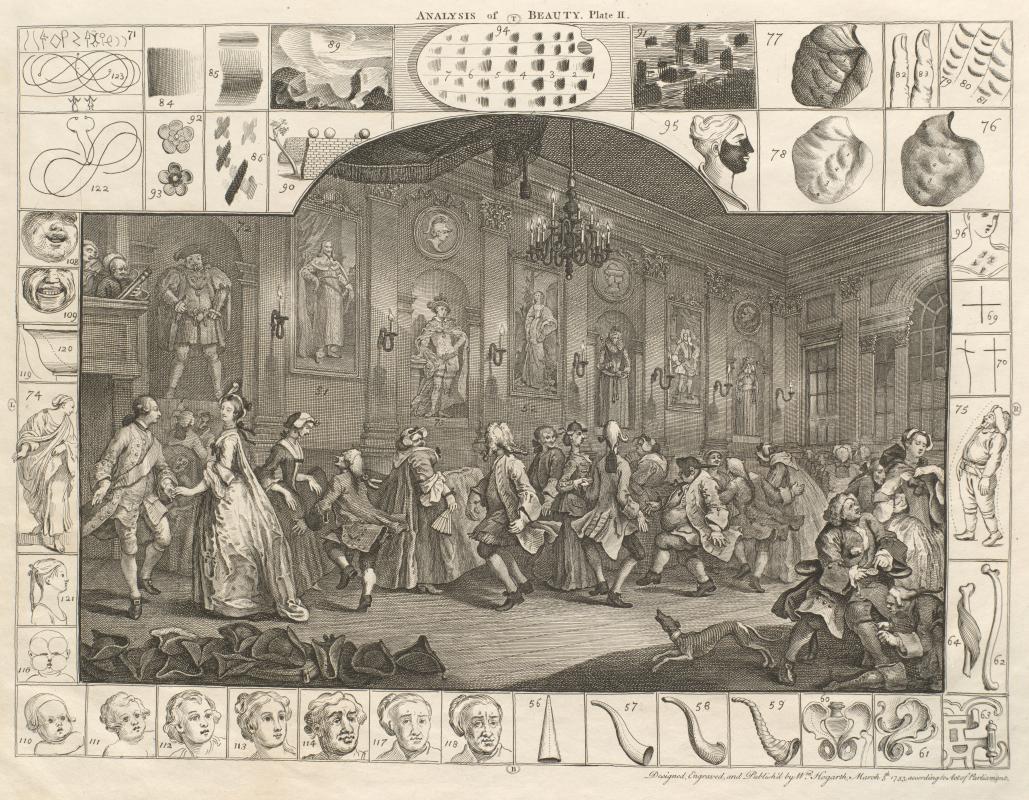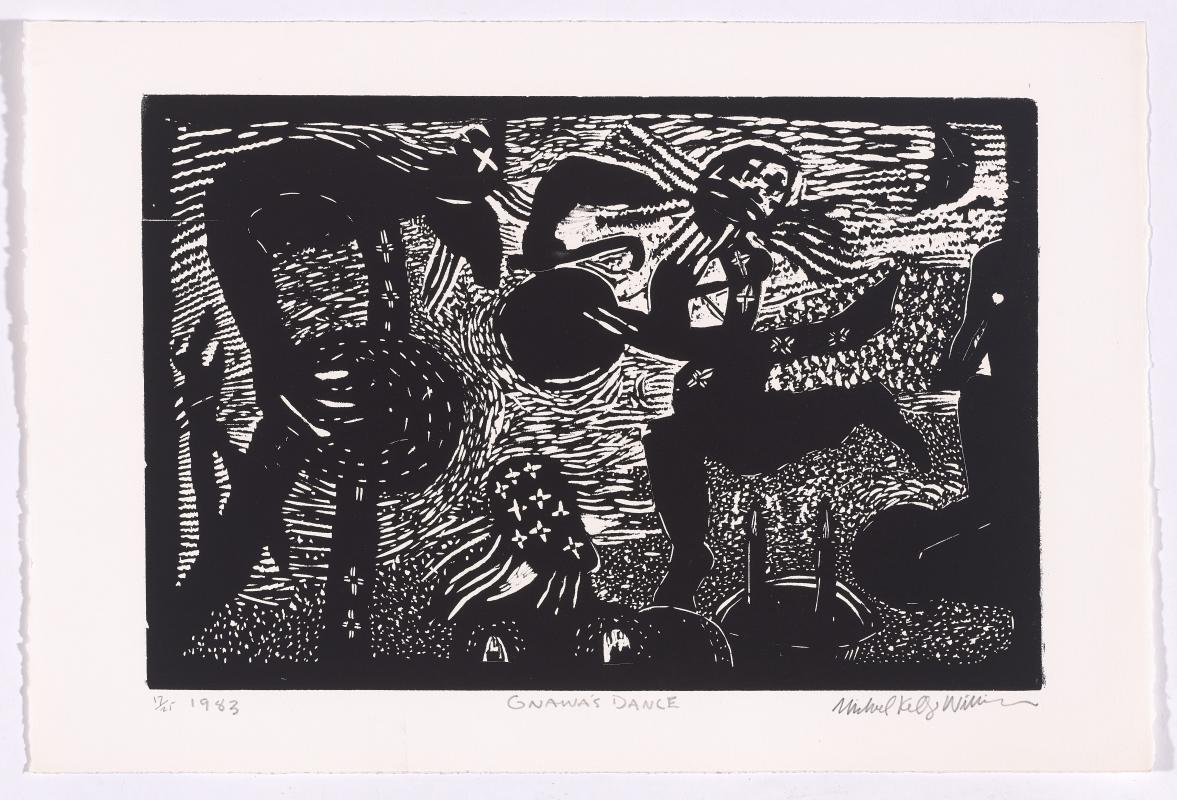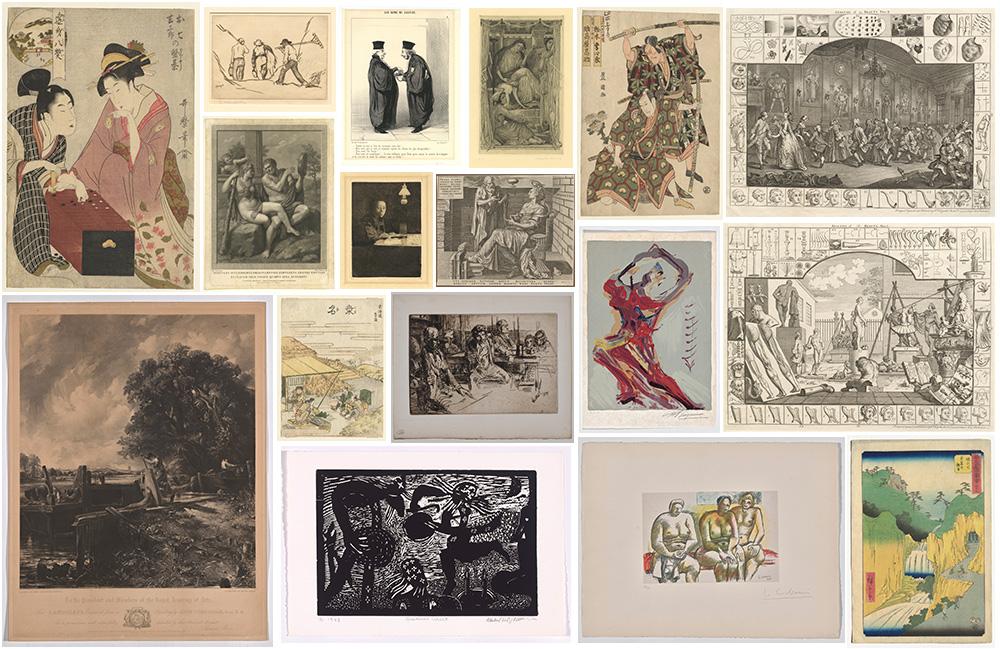
The word “contact” in the art of printmaking evokes the interactions between ink, paper, and press. In this exhibition, the term has additional meaning not immediately linked to the nature of printmaking. Curated by MA candidates in the Department of Art History and Archaeology, Contact: Community and Collaboration Across Five Centuries of Printmaking presents seventeen prints from Columbia’s Art Properties collection in Avery Architectural and Fine Arts Library. Each student selected a print based on their research interests, then the students worked together to curate an exhibition that bridged this eclectic group of works. While community and collaboration as working methods characterize printmaking—a print is often the product of the combined skills of a designer, engraver, printer, and publisher—they also refer here to the curatorial process.
Displayed on the walls of the Judith Lee Stronach Center, this exhibition takes place in a space designed for social contact, collaboration, and community-building around a shared commitment to art history. The MA cohort responsible for this exhibition constitutes its own community, which itself exists within larger ones, including the Department, the Libraries, and Columbia University. In turn, the curators acknowledge that this institution of learning is located in Lenapehoking, the territory of the Lenape people, an Indigenous community that experienced displacement and dispossession, and continues to be present on the land where we currently study and work. Today, in light of the COVID-19 pandemic, the curators hope that “contact,” “community,” and “collaboration” can signal renewed interaction among the members of our Department and beyond, around works of art that we can connect with in person.
Though spanning five centuries, the seventeen prints on view are not meant to tell a holistic history of printmaking. A relatively broad range of techniques are shown—all of which are explained in the handout—but only a few artistic traditions are represented. Therefore, while the prints’ individual labels engage with themes of contact, community, and collaboration from multiple perspectives, the general display is guided by formal echoes between neighboring prints, rather than by historical, geographical, or contextual relations. As you view the exhibition, we invite you to reflect on our curatorial choices and to consider other connections you might find across the prints, since the current display is only one of many possibilities. We also encourage you to engage further with the exhibition.

